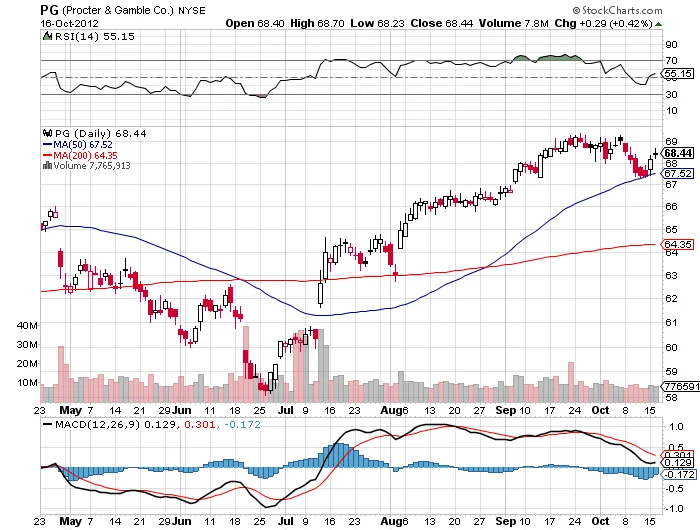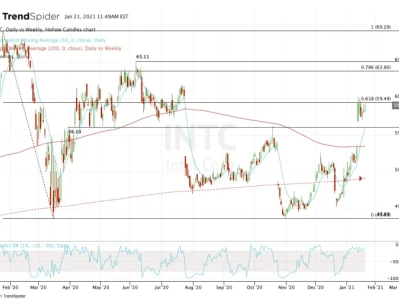The Market's Applause
The digital ticker tape flashed green for Procter & Gamble on Friday. The consumer goods behemoth delivered its Fiscal Q1 2026 earnings, and on the surface, the numbers looked solid. The company posted adjusted earnings of $1.99 per share, neatly beating the Wall Street consensus of $1.90. That represents a 3% year-over-year increase, a respectable, if not spectacular, growth figure for a company of this scale. The market, ever hungry for a positive headline, reacted as expected: the stock rallied, a move detailed in PG Earnings: Procter & Gamble Stock Jumps on a Fiscal Q1 Earnings Beat - TipRanks.
On platforms like X, the retail chatter immediately coalesced around the recent price dip to $150.41, framing it as a potential entry point. The narrative was simple and seductive: a blue-chip giant, momentarily undervalued, beats earnings and is now poised for a rebound. Adding fuel to this fire are the Wall Street analysts, who have been almost uniformly bullish. Over the last six months, we’ve seen eight "buy" or "overweight" ratings and a grand total of zero "sell" ratings. The median price target sits at a confident $177.00.
From this vantage point, the picture seems clear. A temporary downturn, a solid earnings report, and a chorus of optimistic analysts. It’s a classic buy-the-dip scenario, a story the market loves to tell itself.
But data, like any good story, has layers. And I've found that the most important information is rarely in the headline. While the market was applauding the front-of-house performance, a very different and, in my view, more significant story was unfolding backstage. You just had to know which filings to read.
The View from the C-Suite
Over the past six months, there have been 25 open-market trades in PG stock by company insiders. All twenty-five of them were sales.

Let that sink in. Not a single open-market purchase. The total volume of these sales is substantial, but two transactions in particular stand out. CEO Jon R. Moeller offloaded 51,803 shares for an estimated $8.1 million. COO Shailesh Jejurikar sold 17,025 shares, pocketing around $2.7 million. The common retort to this kind of data is that insiders sell for many reasons—diversification, tax planning, buying a new boat. And that’s true. But they typically buy for only one reason: they believe the stock is going up.
I've looked at hundreds of these filings over the years, and a pattern of 100% net selling from the highest levels of management is a statistical anomaly that demands attention. It's like watching the architects of a skyscraper sell their personal condos in the building while publicly praising its structural integrity. It might be a coincidence, but it’s a coincidence that should make any data-driven investor pause. What fundamental weakness or future headwind, invisible in a quarterly earnings report, could prompt such a unified exit? Is the 3% earnings growth—to be more exact, a 3.1% increase from $1.93—masking a deeper issue with volume, margins, or market share that only they can see?
This discrepancy between external optimism and internal action is the core of the issue, and a central theme in various Procter & Gamble Stock (PG) Opinions on Recent Price Decline and Insider Sales. This isn't just a few executives trimming their positions. This is a consistent, one-sided flow of capital out of the company, directed by the very people paid to create value in it.
The institutional data further complicates the bullish narrative. In the most recent quarter, more large funds decreased their positions in PG than increased them (1,911 versus 1,664). While Kingstone Capital made a massive buy of over 76 million shares, a heavyweight like Wellington Management Group liquidated its entire position (a sale of over 8.4 million shares). This isn't the unified institutional conviction you'd expect to see. It’s a fractured picture, with a slight but clear bias toward selling. Even Congress, a notoriously noisy but sometimes telling indicator, has shown more selling than buying in the last six months.
So, we are left with two competing datasets. On one side, a positive earnings beat and bullish Wall Street price targets. On the other, a silent but unanimous vote of no-confidence from top executives and a net outflow from institutional investors. Which signal carries more weight?
A Tale of Two Signals
The market is a forward-looking mechanism, but it has a notoriously short memory, often captivated by the most recent, most easily digestible piece of news. A 9-cent earnings beat is simple, quantifiable, and fits neatly into a headline. A pattern of insider selling across 25 separate transactions requires more digging and a willingness to question the prevailing narrative. My analysis suggests the market is reacting to the weather report, while the insiders are reacting to the changing climate. The former is a short-term condition; the latter is a long-term trend. When the people with the most complete and timely information are all moving in one direction, it's a signal that should drown out almost all other noise.

